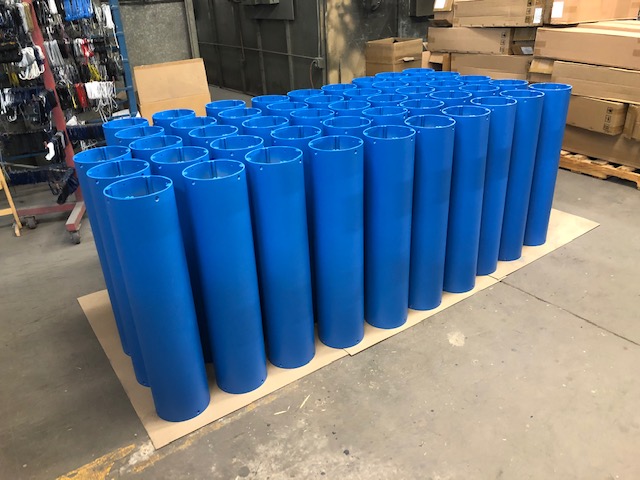MILITARY ∙ MEDICAL ∙ AEROSPACE ∙ ELECTRONICS ∙ SEMICONDUCTOR ∙ CONSTRUCTION
Automated media blasting is a process that uses high-pressure air or centrifugal force to propel abrasive media against a surface to clean, polish, or prepare it for further processing. Unlike manual blasting, automated media blasting utilizes machinery to consistently apply the abrasive material, ensuring uniform results and increased efficiency. Here are key aspects of automated media blasting:
- Process Overview:
- Abrasive Media: Various types of abrasive media can be used, including sand, glass beads, aluminum oxide, steel shot, and plastic beads, depending on the material being treated and the desired finish.
- Blasting Equipment: Automated systems often include conveyor belts, rotating tables, or robotic arms to move the workpieces through the blasting area.
- Control Systems: These systems are equipped with control units to adjust parameters like pressure, media flow, and duration to achieve the desired surface finish.
- Types of Automated Media Blasting Systems:
- Continuous Systems: Use conveyor belts to move parts through the blasting chamber continuously.
- Batch Systems: Load multiple parts into a blasting chamber, which processes them all at once.
- Robotic Systems: Employ robotic arms to manipulate parts within the blasting chamber for precise and complex blasting patterns.
- Applications:
- Surface Preparation: Prepares surfaces for painting, coating, or bonding by removing rust, scale, old paint, or contaminants.
- Cleaning: Removes residues, such as grease or mold, from machinery parts, tools, and other equipment.
- Finishing: Provides a specific texture or finish to surfaces, such as matte or satin, often used in aesthetic applications.
- Deburring: Removes sharp edges and burrs from metal parts after machining or cutting processes.
- Advantages:
- Consistency: Provides uniform surface treatment, reducing the variability associated with manual blasting.
- Efficiency: Can process large volumes of parts quickly and with minimal human intervention, increasing throughput.
- Precision: Allows for precise control over the blasting parameters, ensuring the desired surface quality is achieved.
- Safety: Reduces the risk of operator exposure to hazardous materials and environments.
- Considerations:
- Initial Cost: Automated systems require a significant upfront investment compared to manual blasting.
- Maintenance: Regular maintenance is necessary to ensure the machinery operates efficiently and to prevent downtime.
- Space Requirements: These systems can take up significant floor space, depending on their size and configuration.
Overall, automated media blasting is a highly efficient and effective method for surface treatment in various industrial applications, offering enhanced control, consistency, and productivity.
POWDER COATING PHOENIX
STP Performance Coating provides the best powder coating services throughout the Phoenix, Arizona area in including Glendale, Tempe, Scottsdale, Laveen and more…


